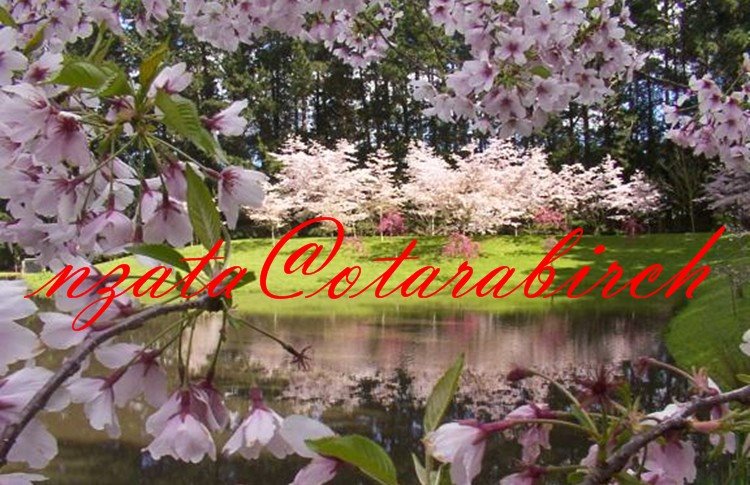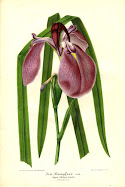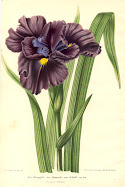This is a stunning Japanese iris that flowers in my garden. It is another spectacular 6 petal form of
Iris ensata " Pink Dimity".
Iris ensata " Pink Dimity".
The colour is stunning. A beautiful lightly ruffled rich vibrant pink. (RHS 55D) ground, veined light maroon (74B), mauve (74C), halo around gold signal, mauve (74C) stylearms. The plant grows really well for me with lots of beautiful clean foliage and tall ram rod stems held proudly above the upright arching foliage. It produces an abundance of flowering stems on a well formed stunning clump in late November / early December.
This was created and selected by Lorena Reid and registered by her in 1987 from her seedling D658-7. Cross with Valiant Prince X Marx MX 4, introduced by Laurie's Garden 1987.


"Pink Dimity" was awarded an Honorable Mention (HM) for its plant growth habit and flowering in 1989 and a Award of Merit (AM) in 1994 after its introduction.
It grows to height of 91 cms (36 ins) and flowers early to mid season in New Zealand while flowering in the mid season else where in the world.
It grows to height of 91 cms (36 ins) and flowers early to mid season in New Zealand while flowering in the mid season else where in the world.
This beautiful variety looks magic planted up in drifts of 10 to 15 or more plants to be enjoyed in the garden near your pond or any rich moist soil. Makes a stunning display when in full flower. Just unreal in it's colours giving an amazing effect.
 ce fertilizer in the early spring and again after flowering around the drip line of foliage will do them proud. Little and often is a good rule of thumb for fertilizers.
ce fertilizer in the early spring and again after flowering around the drip line of foliage will do them proud. Little and often is a good rule of thumb for fertilizers.Water in where possible to help the plant take up the benefits. Mulch around the plants with barely straw, pine needles or pea straw to retain moisture in soil and prevent weed growth.
Remember that Japanese Irises "Love wet toes and dry ankles" so when you are planting these take this into consideration please.
















































